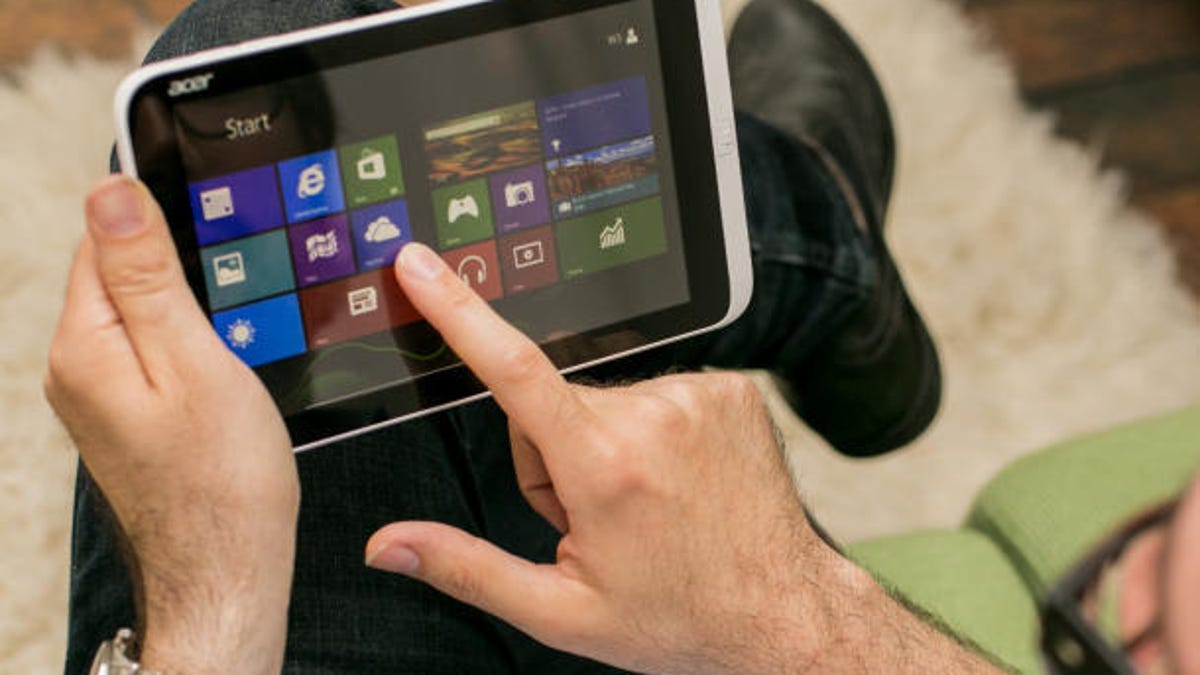Forget Surface. Microsoft's new iPad rival is the Windows 8 tablet
For Microsoft, the road to tablet riches may well be filled with devices that are small of screen and that don't include a touch cover keyboard.

No matter how well designed, Microsoft's marquee tablet, the Surface, has failed to gain much traction, and the iPad still sits high atop the market share list -- although Android competitors are closing the gap. And early Tuesday, Apple finally made its latest move on the mini tablet front: The iPad Mini with Retina Display went on sale in the United States and a handful of other countries.
But Microsoft's play against the iPad may increasingly have less to do with the Surface, and more to do with smaller tablets running Windows 8 and 8.1 software. Only recently -- since the second half of this year -- has Microsoft had Windows 8 offerings on smaller display tablets like the Acer Iconia 8.1-inch tablet. That one goes for as little as $321.77 (though it's also worth noting that Microsoft's original Surface now goes for $350.)
Other manufacturers making smaller tablets that run Windows include Lenovo and Asus. Microsoft is also said to be coming out with its own 7.5-inch tablet early next year. "It's still a little too early to tell exactly what Microsoft's strategy is, but in the short term, they'll continue with what's been successful," said Richard Shim, a senior analyst at NPD DisplaySearch. He said that the company's been gaining more traction with smaller tablets, though official third-quarter shipment data won't be ready for another few weeks.
It's been a tough slog for the Surface. In July, Microsoft announced a $900 million write-down for excess inventory of the Surface RT. The midnight launch of the Surface 2 -- held the same day as Apple's iPad event in October -- failed to draw much excitement from fans. Windows 8 and RT comprised less than 5 percent of tablet shipments in the second quarter, according to IDC. And in the third quarter, Microsoft was mum about Surface sales in its earnings report, but the Windows division of the company saw a 23 percent revenue increase from last year (though there was also no specific mention of Windows 8 sales)."Microsoft's tactic here has been to leverage the notebook market around productivity. They were leveraging what they know," said Shim. The Surface, of course, has an integrated keyboard cover, allowing the tablet to function more like a PC. "But in this convenience-oriented market, emphasizing the PC approach is dated."
Consumers instead often have simpler needs for a tablet: a device that starts up instantly, something to check their e-mail on, the ability to surf the Internet, and access to their favorite Web services, Shim said. Thus, providing solid Windows alternatives to the Surface makes sense for Redmond.
Using smaller screen tablets to try and get ahead in the tablet market also aligns with current trends. Much of the new growth in the market -- which has grown 36.7 percent from the third quarter last year, according to IDC -- has been because of consumers buying smaller tablets. Earlier this year, IDC also predicted that tablets smaller than 8 inches would overtake tablets in the 8- to 11-inch range by the end of this year, and that tablets smaller than 8 inches would eclipse every other size with almost 60 percent market share by 2017.
Still, Microsoft has work to do on the OS front. Windows 8, and now 8.1, have their shortcomings. The main complaint has been, in trying to serve both tablets and PCs, the OS misses the mark on them both. For example, users had to toggle between two different views -- traditional desktop, and the tile-based tablet view. The 8.1 update fixes some of the problems, but CNET wrote in a news review that the update didn't do much to push the OS forward.
And for the time being, Android clearly controls the small and cheap tablet arena.
Shim thinks it's helpful for Microsoft to look at how Android was able to navigate the space, because Microsoft is going though many of the same challenges. For example, Android had a fragmented operating system with compatibility issues, which made things tough on developers. When Android addressed some of those issues, the market opened up more. And the success of the Google Play store tied much of it together, said Shim.
"It's good example of how fast things can turn with the right strategy," he said.

